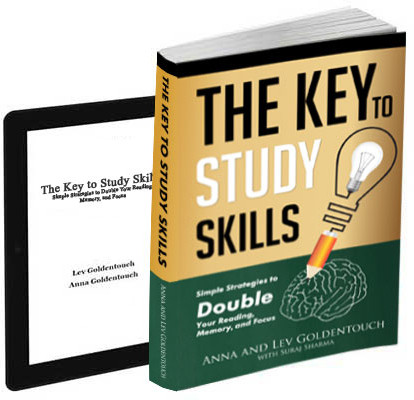Spaced repetition is a powerful learning strategy, but implementing it universally for every learner can be challenging. Each student has their unique blend of learning goals, attention spans, and material complexity. That said, no matter which strategy you adopt, there’s a versatile toolkit that can help you master long-term retention. Let’s explore the core tools, advanced techniques, and valuable insights from across the web to enrich your learning journey.
The Power of Spaced Repetition
Spaced repetition operates on the principle that information is best retained when reviewed at increasing intervals. Instead of cramming everything in a short time, you space your reviews, allowing the brain to consolidate knowledge more effectively. This method is especially useful for complex materials that require frequent revisits to stay fresh in memory.
According to this article on long-term memory manipulations, integrating different levels of review complexity at strategic intervals helps encode information deeper into long-term memory. It’s not just about rote memorization—spacingallows your mind to connect dots between related concepts, enhancing understanding.
Introducing Anki: The King of Flashcards
The most recognized and widely adopted tool for spaced repetition is Anki. This flashcard software uses a smart algorithm to schedule review sessions for each card, adjusting the intervals based on your response. Cards you struggle with appear more often; cards you’ve mastered appear less frequently.
Our very own Jonathan uses Anki extensively to learn foreign languages, and the results speak for themselves. It’s ideal for memorizing vocabulary, formulas, and any information that fits well on a Q&A card.
However, as discussed in this critical perspective, not all learners benefit equally from spaced repetition tools like Anki. For example, highly visual or concept-heavy learners may find flashcards restrictive or disengaging.
When Anki Isn’t Enough: Creating Your Oystem
My journey with spaced repetition began before tools like Anki were popular. Instead of pre-made flashcards, I created a more flexible system using cloud storage like Google Drive. I would save entire books, screenshots, and articles, tagging key points and revisiting them regularly. When I couldn’t recall an article’s content just from the title or topic, I knew it was time to reread it.
You can follow a similar method:
- List your key “questions” on one side and “answers” on the other.
- Shuffle through the questions and test your ability to recall the answer.
- If you fail, refer to the answer and try to rebuild the concept mentally.
- Optionally, reverse the process by reading the “answers” and recalling the original questions.
This technique is especially useful for larger materials or complex systems where a single flashcard cannot capture the depth of the concept.
The Role of Curiosity in Retention
Spaced repetition works even better when paired with curiosity. When you’re interested in what you’re learning, you naturally want to revisit it more often—and that’s half the battle. According to this article on curiosity and learning, curiosity drives mental engagement and anchors memories more strongly.
So, before jumping into mechanical reviews, take a few minutes to stir up some curiosity. Ask yourself: Why is this interesting? What will mastering this concept enable me to do? This little trick can significantly enhance your memory retention.
Markers: The Visual Layer of Spaced Repetition
At KeyToStudy, we teach the concept of mental markers—vivid mental images or stories that help encode information more deeply. Markers can be brought into the spaced repetition strategy by embedding them into your questions and answers.
To do this effectively:
- Add rich, visual descriptions to your answer section, like 3D actions or color-coded events.
- When revisiting the questions, try to recreate the image or story that represents the concept.
- If a marker doesn’t trigger any recall, that’s a sign it needs to be rebuilt from scratch.
This technique is similar to what you’d do during an intense history exam—starting with a general outline and gradually filling in the specifics.
Explore how to design powerful markers in this deeper dive on many repetitions and long-term retention.
Building a Resilient Review Schedule
Designing an efficient review schedule is crucial. A common mistake is reviewing too frequently or inconsistently. Use these general rules:
- Day 1: First review right after the lesson.
- Day 2: Second review within 24 hours.
- Day 4: Third review.
- Weekly and then monthly as needed.
This structure ensures you reinforce memory before it fades while maximizing long-term retention. If you want more control over this schedule without relying on software, simply create a calendar system or spreadsheet with reminders.
Emotional Anchoring: Making It Stick
Another underrated approach is emotional anchoring. If a concept has emotional weight—whether positive (success, joy) or negative (fear, failure)—it’s more likely to be remembered. Try linking study content with personal experiences, goals, or even fictional scenarios.
For example, if you’re learning about the law of supply and demand, imagine running your candy store and panicking when lollipops sell out—this emotional, visual story helps anchor the learning.
This strategy is part of what we teach in the KeyToStudy Memory Masterclass. By combining mental markers with emotional and spaced repetition techniques, you can accelerate your learning dramatically.
Pitfalls to Avoid
While spaced repetition is highly effective, beware of these common pitfalls:
- Boredom and burnout: Repeating the same material too often can lead to mental fatigue. Mix up your content and use humor or novelty in your markers.
- Poor questions: If your questions are vague or poorly defined, your answers will be too. Make sure each flashcard or question is precise.
- Passive recall: Just flipping through cards without mentally retrieving the answer weakens the effect. Always attempt active recall before checking.
- Unbalanced content: Repeating simple facts too much while ignoring complex ideas doesn’t build comprehensive knowledge. Balance your reviews.
Social Learning and Motivation
While repetition is often a solo endeavor, it doesn’t have to be lonely. Sharing your flashcards, quiz sets, or markers with friends can lead to valuable feedback. Teaching others is another excellent way to reinforce your understanding.
We invite you to join the KeyToStudy community on Facebook. Share your progress, ask questions, and discover how others are building their memory skills.
Final Thoughts: Customize Your Toolkit
There is no one-size-fits-all approach to spaced repetition. Whether you’re using Anki, building your system, or layering in visual markers, the key is customization. Explore multiple methods, track your results, and fine-tune your approach.
And if you’re ready to master memory with a structured plan, check out the KeyToStudy Memory Masterclass. It’s packed with advanced strategies, exercises, and coaching insights that can transform how you learn.
Stay curious, keep repeating, and make memory your superpower.

Get 4 Free Sample Chapters of the Key To Study Book
Get access to advanced training, and a selection of free apps to train your reading speed and visual memory

